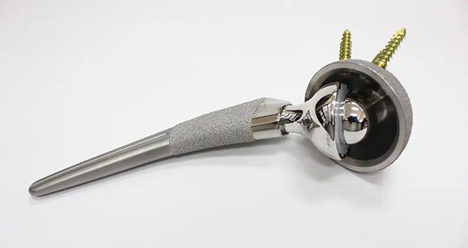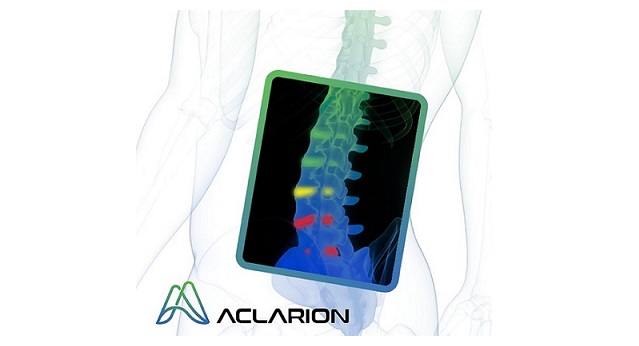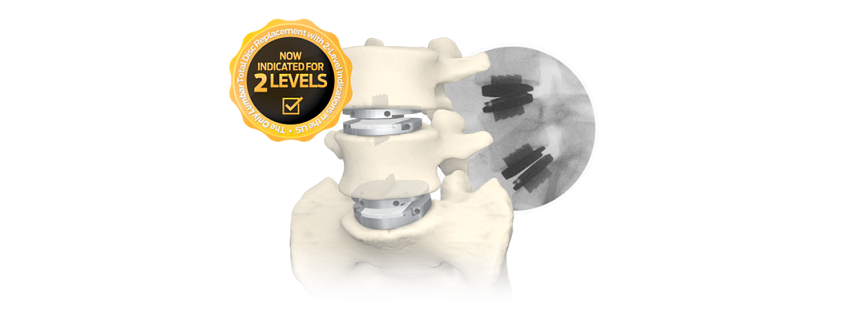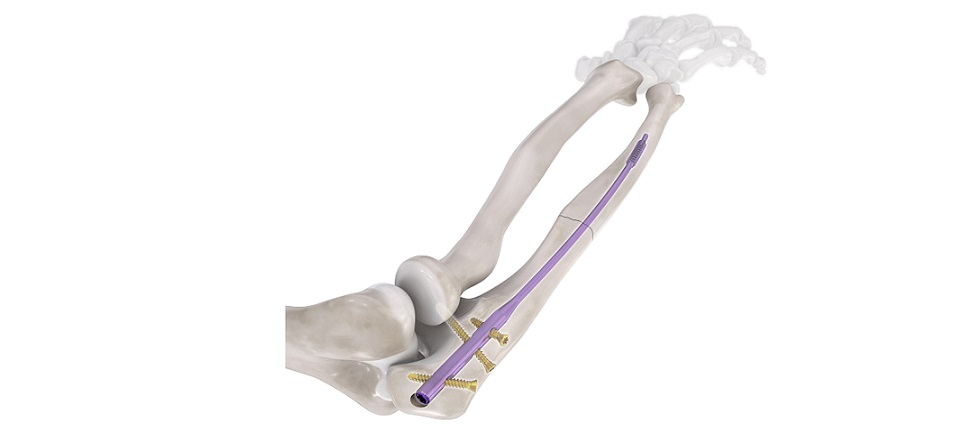First U.S. Implantation of its Reverse Hip Replacement System for the Treatment of Total Hip Arthroplasty Completed
BOCA RATON, Fla., Jan. 12, 2023 /PRNewswire/ — Hip Innovation Technology, LLC (HIT), a medical device company developing innovative orthopaedic device solutions to advance the quality of life and quality of care for patients, is pleased to announce the first U.S. implantation of the HIT Reverse Hip Replacement System (Reverse HRS), under an FDA approved Investigational Device Exemption (IDE). The IDE Study is being conducted to determine the safety and effectiveness of the HIT Reverse HRS in Primary Total Hip Arthroplasty (THA). Safety will be assessed through the collection of device-related adverse events and patient quality of life metrics. Effectiveness will be evaluated using clinical, radiologic, and patient-reported outcomes.
Stephen Zabinski, MD, Director of the Division of Orthopaedic Surgery, Shore Medical Center in Ocean City, New Jersey, performed the first surgery using this exciting new technology on January 10, 2023. Dr. Zabinski states “The reverse hip replacement system offers potential unique benefits regarding motion and stability. My first patient was very educated and after researching the implant, was motivated to proceed. Her surgery went extremely well and I’m excited to see her in follow up, and to use the Reverse HRS in additional patients.”
“The Reverse HRS is a novel hip implant design that we believe represents breakthrough technology and a significant advancement for patients requiring total hip arthroplasty,” said George Diamantoni, Co-Founder and Chief Executive Officer of Hip Innovation Technology. “We look forward to rapidly enrolling patients in this important clinical study and validating potential clinical benefits including, hip stability at extended ranges of motion, reduced risk of device dislocation and greater latitude for placement of hip components relative to the currently marketed designs.”
With our ongoing Canadian Clinical Study in Winnipeg, over five years of patient data has been collected using Radio-Stereometric Analysis (RSA) that demonstrates excellent fixation and aggregate data to suggest significant improvement from pre- to post-operative patient and physician measures. The Reverse HRS has also been extensively tested in over 100 standard and unique pre-clinical, bench level experiments assessing the product safety and clinical benefits anticipated by the reverse system design.
“The bench level data compiled for the Reverse HRS exceeded all FDA requirements, setting the stage for clinical use,” said Steve MacDonald, MD, Professor and JC Kennedy Chairman of Orthopaedic Surgery at the University of Western Ontario in London, Ontario, Canada. “The clinical trial that has been performed in Canada has demonstrated excellent prosthesis to bone interface stability as evidenced by RSA data. The novel Reverse HRS is now beginning enrollment in the FDA IDE clinical trial with multiple outcome measures being evaluated.”
Total hip replacements are one of the most effective ways to reduce joint pain and improve functioning for patients with advanced hip problems. According to the American Academy of Orthopaedic Surgeons (AAOS), over 450,000 hip replacements are performed each year in the United States.
About the Reverse HRS
The Reverse HRS is an advanced Metal-on-Polyethylene reverse geometry hip prosthesis designed to improve stability at extended ranges of motion and reduce the risk of dislocation. Similar to conventional systems, the Reverse HRS consists of a femoral stem, an acetabular cup and a cobalt-chrome ball that articulates within a polyethylene liner. Unlike existing total hip replacement systems, the ball is placed on a trunnion within the acetabular cup instead of the femoral stem, and the polyethylene liner is attached to a femoral cup, which then attaches to the femoral stem, as opposed to the polyethylene liner being attached to the acetabular cup. This technological difference does not change the center of rotation of the Reverse HRS, and it remains similar to a normal physiological hip, or a well-positioned traditional Total Hip Arthroplasty. The advanced Reverse HRS implant is designed to provide greater range of motion in all planes, enhanced hip stability, and to reduce the risk of dislocation. Importantly, the Reverse HRS also provides variability of component placement including higher abduction angles and anteversion of the acetabular cup. The femoral cup articulates around the acetabular ball and overlaps with the acetabular cup as the hip undergoes flexion-extension, abduction-adduction, and internal-external rotation. This forgiving design may compensate for suboptimal component positioning which may provide benefits such as extended range of motion, hip stability and reduced likelihood of impingement. The Reverse HRS is designed to uncouple the relationship between component placement, wear, and stability. This unique implant design of the Reverse HRS provides optimal surface area contact between the acetabular ball and femoral cup, which may eliminate edge loading. Elimination of edge loading may provide benefits that include reduced high-contact stresses, decreased implant wear and uniform wear, which minimizes generation of wear debris and associated concerns related to osteolysis.
About Hip Innovation Technology, LLC
Headquartered in Boca Raton, Florida, Hip Innovation Technology was formed in 2011 to provide market-leading orthopedic device solutions that advance the quality of life and quality of care for patients. In partnership with healthcare professionals worldwide, our goal is to identify unmet clinical need, then design, manufacture and ultimately market innovative orthopedic reconstructive and related surgical product solutions.
For more information, visit www.hipinnovationtechnology.com.
Cautionary Statement Regarding Forward-Looking Statements
This news release may contain forward-looking statements within the meaning of the safe harbor provisions of the Private Securities Litigation Reform Act of 1995. Forward-looking statements include, but are not limited to, statements concerning Hip Innovation Technology’s expectations, plans, prospects, and product and service offerings, including new product launches and potential clinical successes. Such statements are based upon the current beliefs and expectations of management and are subject to significant risks and uncertainties that could cause actual outcomes and results to differ materially. Hip Innovation Technology disclaims any intention or obligation to update or revise any forward-looking statements, whether as a result of new information, future events or otherwise. Accordingly, such forward-looking statements speak only as of the date made. Readers of this news release are cautioned not to place undue reliance on these forward-looking statements, since, while management believes the assumptions on which the forward-looking statements are based are reasonable, there can be no assurance that these forward-looking statements will prove to be accurate. This cautionary statement is applicable to all forward-looking statements contained in this news release.
Contact:
George Diamantoni, CEO
Hip Innovation Technology
InvestorRelations@HIT-IRH.com
Media:
John Kouten
JFK Communications, Inc.
(609) 241-7352
jfkouten@jfkhealth.com
SOURCE Hip Innovation Technology








